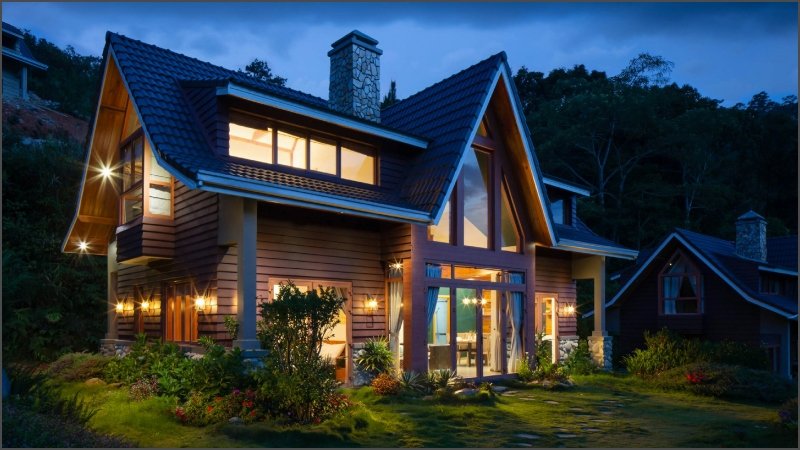The way we live has changed faster than most houses can keep up. Today’s homes have to do more than provide shelter. They double as offices, classrooms, gyms, and sometimes even mini medical centers. They have to be flexible, efficient, and ready to handle whatever surprise the world throws at us next—be it a power outage, a market shift, or just another family member moving back in.
Relying on a home’s basic structure while ignoring how it supports modern life is like having a flip phone in a world of smartphones. You can make it work, but it’s going to be clunky, slow, and eventually frustrating.
In this blog, we will share why a house built for today’s world needs more than a solid foundation—it needs to support your daily reality, your future goals, and your ability to adapt when life gets complicated.
Structure Won’t Save You from Chaos
“Good bones” might mean a house is structurally sound, but that’s not much help if the layout is chaotic and daily life feels cramped. With remote work now a lasting norm, homes are juggling more roles than ever—offices, studios, classrooms—and many just weren’t built for that kind of multitasking.
On top of that, the cost of moving has skyrocketed. High interest rates, low housing inventory, and inflated material prices make remodeling a smarter choice for many than buying new. People are looking for ways to improve what they already have without starting from scratch.
That’s where flexible options like HELOC loanscome in. For homeowners trying to adapt without draining their savings, tapping into home equity is often a practical way to fund necessary changes. It allows for targeted upgrades that improve quality of life without upending your financial plan. And if there’s anything the last few years have taught us, it’s that your home should be ready to do more than just sit there looking structurally sound.
Design That Thinks Two Steps Ahead
When houses were built decades ago, nobody was thinking about charging ports or ergonomic desk setups. Most bedrooms weren’t wired for heavy tech use. Hallways were narrow. Storage was an afterthought. Now, the average family needs every square foot to serve multiple purposes. The guest room can’t just be a guest room anymore. It’s got to be a part-time office, craft station, or recovery zone for someone down with the flu.
Future-proofing your home doesn’t mean installing robot butlers or buying solar panels you don’t need. It means making smart, practical choices that add flexibility. Things like:
- Movable kitchen islands that add prep space but can be rolled away when needed.
- Pocket doors that create privacy without taking up extra room.
- Under-stair storage for those things that always seem to live on countertops.
- Multi-height counters to serve kids, adults, and even seated users comfortably.
These upgrades aren’t flashy. They’re not going to land you in a glossy design magazine. But they will change how your home works for you.
And yes, the structure still matters. No one’s saying ignore the bones. But bones don’t do the cooking. They don’t hold your meetings. They definitely don’t clean themselves. Functionality, not just foundation, is what matters now.
Comfort Isn’t a Luxury—It’s the Baseline
Comfort used to mean plush rugs and scented candles. Now it means airflow that doesn’t make you sneeze. Lights that turn on when your hands are full. A thermostat you can adjust from your phone when you’re stuck in traffic. These aren’t luxuries. They’re tools for living better in a busy, unpredictable world.
Take bathrooms, for example. If your shower feels like a freezing waterfall in winter or the sink splashes more water on the counter than into the bowl, you’re wasting time and patience daily. Simple changes like water-saving fixtures, warm lighting, and better ventilation can completely shift the mood and function of a space.
And while we’re on the subject, let’s not ignore the mental side. Studies continue to link cluttered, poorly designed spaces with higher levels of stress and anxiety. You might not notice it day-to-day, but over time, a frustrating layout or lack of privacy chips away at your ability to recharge.
So yes, insulation matters. Roofing matters. But so does having a reading nook that isn’t next to the laundry machines. Or a hallway that doesn’t feel like a haunted house every time you walk down it after sunset.
A Home That Works for the Life You’re Actually Living
Here’s the thing. Life doesn’t care about your blueprints. It doesn’t wait for your 5-year plan to play out before throwing you curveballs. Your home shouldn’t either.
Think about the people you live with. Kids grow. Parents age. Relationships shift. You may need room for a home business or space for a partner who just started working from home. Maybe you’re supporting someone with limited mobility. Maybe you just want to feel like you’re not tripping over everyone during breakfast.
Your home should be part of that solution, not another problem to manage. That means rethinking how you use your space—not just decorating it better.
And if you’re planning for the long haul, it helps to invest in updates that stretch beyond the now. Built-ins that can adapt over time. Layouts that don’t trap you into one function per room. Materials that hold up when life gets messy.
It’s not about chasing trends. It’s about building habits into the structure. Systems that make daily life smoother. Places that feel like they were made for you—even as you change.
The bottom line?
A home with good bones is a start. But the homes that actually serve us today don’t stop there. They think ahead. They adapt. They reduce friction instead of creating it. Whether you’re renovating a kitchen, converting a garage, or just trying to finally fix that awkward hallway corner, the question shouldn’t be, “Will this look nice? Visit Kenn Whaitaker for more details.
